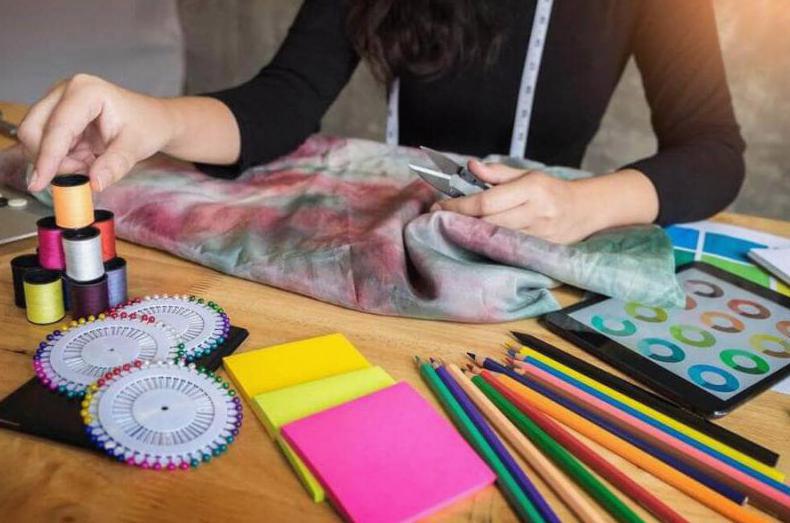
Textile design has evolved throughout history but remains an important part of our everyday lives whether we realize it or not! From blankets keeping us warm at night, shirts made from breathable fabrics designed specifically with athletes in mind; these are just some examples of how far this craft has come over centuries . With technological advancements continuing at rapid pace there’s no telling what new ideas will emerge next from talented professionals pushing boundaries within this ever-evolving field!
The Basics of Color Theory in Textiles Design
The first concept to understand about color theory is hue. Hue refers to the actual colors used in any given piece; for example, red, blue or green. When combining hues, there are several options available: analogous colors (colors that sit adjacent on the color wheel), complementary colors (colors that sit opposite each other on the wheel) and triadic colors (three colors equally spaced around the wheel).
Another key factor in making effective use of color is value. Value simply refers to how light or dark a particular hue appears relative to others – bright yellow versus deep navy blue for instance. This can be adjusted by adding white or black pigments known as "tints" and "shades". Tints make colors appear lighter while shades give them a darker appearance.
Finally, saturation should also be taken into account when creating textiles designs involving color. Saturation describes how vivid a particular hue may be; duller tones have lower saturation than brighter ones do for instance. Adjusting saturation levels allows designers to “tone down” certain elements within their designs while still maintaining an overall desirable aesthetic effect throughout their project's fabrics composition.
Creative Techniques for Working with Fabric and Textiles
Dyeing is one of the most popular methods of customizing fabrics and textiles. With this technique, you can create vibrant colors on any type of material including cotton, silk, wool, linen, rayon and more. Depending on what look you’re trying to achieve (such as tie-dye or batik), different dyes may be used in combination with various resist materials like wax or starch paste. If you want an even more intricate look, multiple layers of color can be added by repeating the same process over again.
Embroidery is another great way to personalize your textile designs. This method involves stitching patterns onto fabric to add texture and dimension. You can use almost any type of thread from metallic flosses or cottons to silks or wools depending on the desired effect you want to achieve. Embroidery also offers endless possibilities when it comes to incorporating motifs such as flowers or animals into your designs for a truly unique piece!
Weaving is yet another option that allows you to transform plain pieces of cloth into works of art. Weaving requires two sets of yarns – warp threads which run lengthwise along the loom while weft threads go across them in alternating rows – that interlock together while being pulled through a set up known as “the shed” in order create patterns and textures on both sides at once!
How to Use EcoFriendly Materials in Textile Design
Here are a few tips on how you can incorporate environmentally friendly fabrics into your designs:
- Choose Natural Fibers – When selecting fabrics for your textiles designs, opt for natural fibers like cotton, linen, wool and silk instead of synthetic options. Natural fibers have fewer harmful chemicals and require less energy during the production process than their synthetic counterparts. Plus they usually look better too!
- Consider Organic Fabrics – Organic fabrics are made with fibers grown without chemical pesticides or fertilizers which helps reduce water pollution and air contamination from hazardous substances found in traditional farming practices. Additionally these fabrics often use dyes derived from plant sources making them even more eco-friendly than non-organic options.
- Look For Recycled Materials – If you’re looking for durable materials that won’t break down easily consider using recycled fabrics such as polyester made from used plastic bottles or nylon crafted out of fishing nets discarded at sea. These kinds of materials help keep waste from ending up in landfills while still providing strong yet lightweight fabric perfect for designing anything from apparel to home décor pieces.
- Utilize Low Impact Dyes– It is important to select low-impact dyes when creating textile designs because traditional ones contain toxins that can harm both humans and the environment when released into waterways through dyeing processes. Low impact dyes on the other hand contain no toxic elements so they provide an excellent option if you need vibrant colors without any adverse effects on Nature .
Posted By #admin



